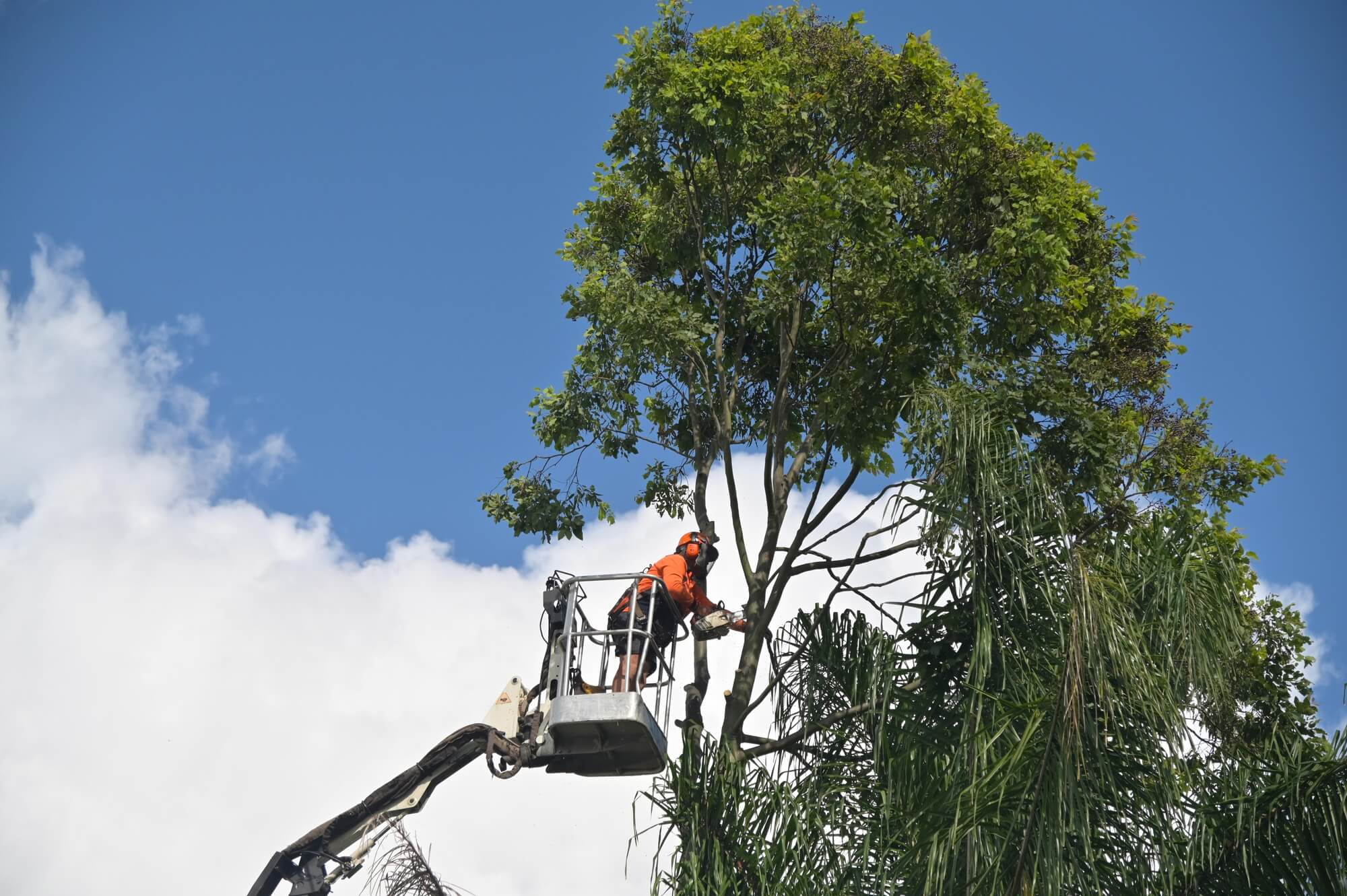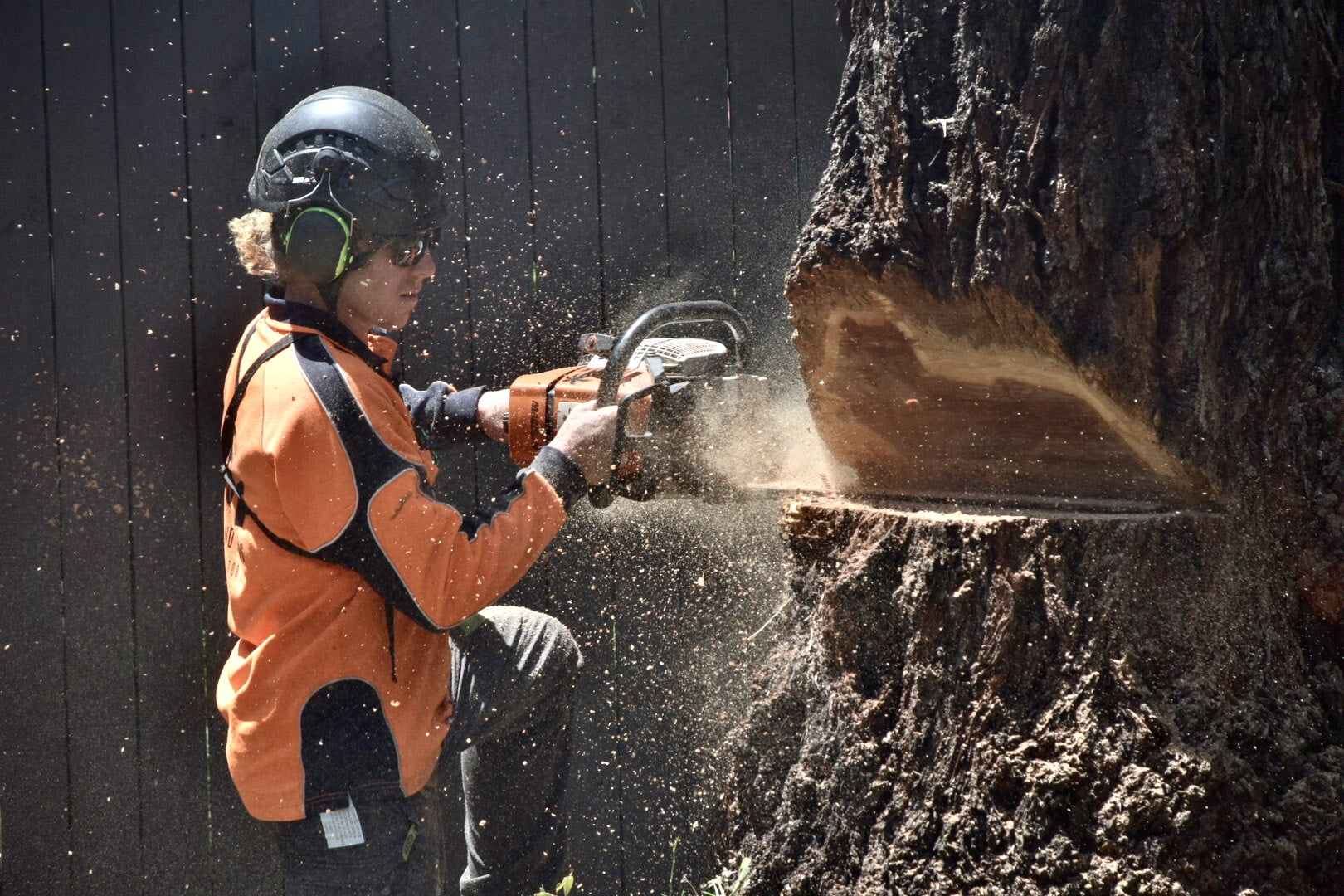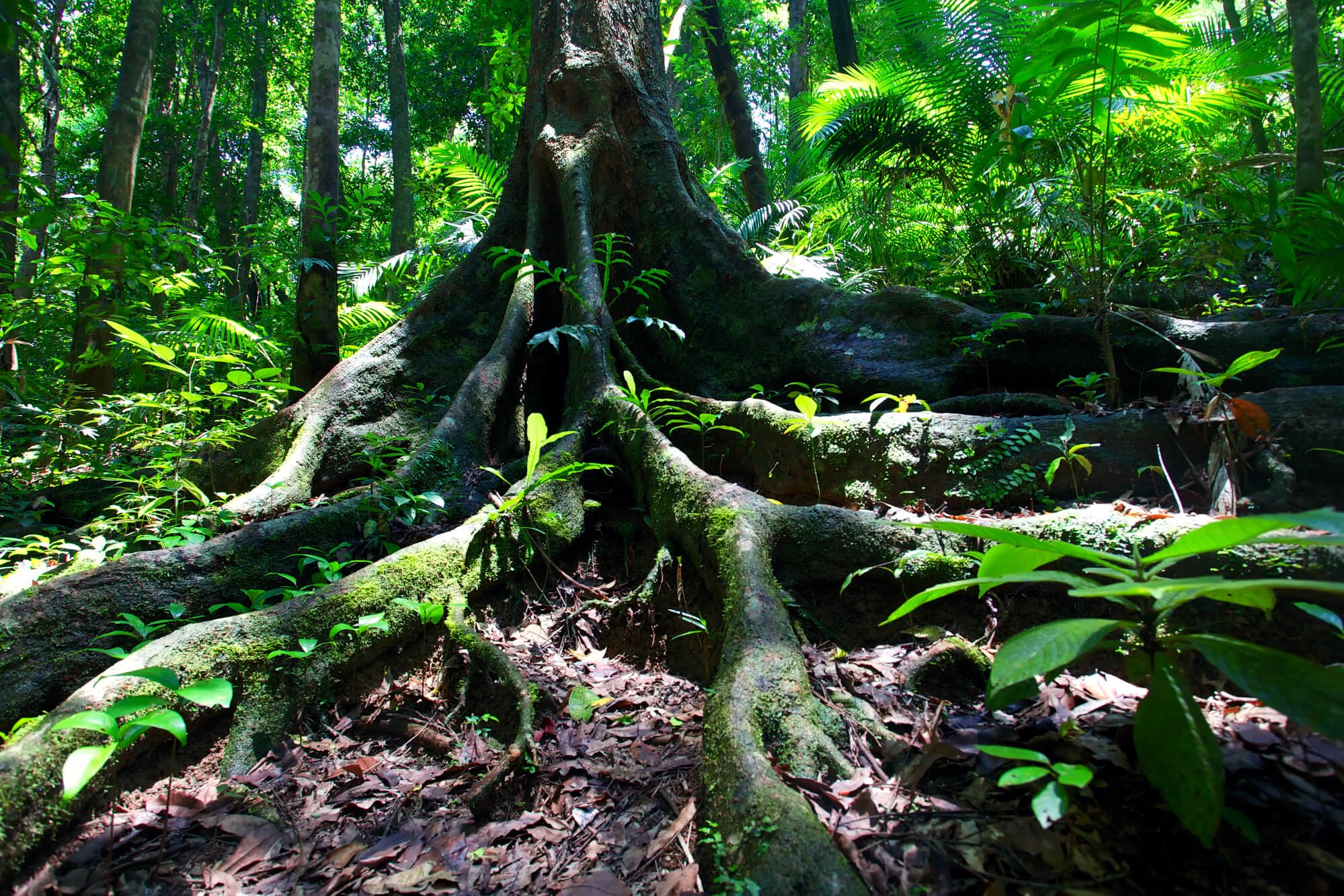Trees, from the moment they sprout from a seed, undergo a remarkable journey through life, which sometimes necessitates their removal. They are more than landscape features; they are essential to our ecosystem, supporting wildlife, influencing climate, enriching soil, and producing oxygen. Arborists play a key role in managing these vital beings, balancing their growth and health.
This article will explore the various stages of a tree’s life, shedding light on the care it needs and when it might need to be removed. We’ll look into the factors impacting a tree’s health and the circumstances under which tree removal becomes essential. Through this, we aim to deepen the appreciation for trees and understand the importance of their lifecycle.
Stages in the Life of a Tree
The life of a tree progresses through stages, each vital to the ecosystem. It begins as a seed, evolves through its sapling and mature phases, and may eventually reach the ancient stage, profoundly influencing both nature and humanity.
Seed Stage: This initial phase sees seeds, each carrying the genetic potential for a new tree, seek a place to germinate. The environment’s moisture, soil, and temperature significantly influence this phase, with early growth marking the beginning of a tree’s journey.
Sapling Stage: Trees in the sapling stage are young, vulnerable, and competing for resources like light and space. Despite challenges from weather, disease, and predators, proper care during this time is crucial for developing resilience.
Mature Tree Stage: Mature trees, now robust and capable of reproduction, become central to their ecosystems, offering habitat and resources to wildlife. Their size and health reflect their life’s history and environmental interactions.
Ancient Tree Stage: In their final phase, trees embody the resilience of nature, showing signs of age yet continuing to play a critical role in their environment. Care for these trees involves specialised maintenance to preserve their legacy and benefits.
Recognising a tree’s life stage is key to its care and management, impacting its health and the benefits it can provide. Knowledge of these stages helps in nurturing trees through their life, enhancing their contribution to the environment and community.
The Importance of Trees in the Environment
Trees are essential guardians of our environment, providing critical ecological functions beyond their visual appeal. They produce oxygen, cleanse the air, support wildlife, regulate climate, and help counteract climate change effects. Their role is pivotal in maintaining ecological balance, necessitating careful consideration before removal and advocating for planting replacements.
Trees as Habitat for Wildlife
Trees create vital habitats for diverse species, offering shelter, food, and nesting sites. Pruning can leave structures that serve as natural homes for birds and other animals, promoting biodiversity. Where natural shelters are lacking, installing nest boxes can help sustain wildlife populations, emphasising the importance of preserving trees as living ecosystems.
Trees and Climate Regulation
Trees are significant in climate regulation, absorbing carbon dioxide and serving as carbon storage. Large-scale tree removal, or deforestation, poses a threat to ecosystems and exacerbates climate change. Hence, planting and conserving trees are essential actions to mitigate these effects and enhance environmental resilience.
Trees and Soil Health
Trees contribute significantly to soil health, affecting water retention and nutrient availability. They stabilize challenging terrains and support growth through proper care, including watering and fertiliser use. Organic mulching around trees benefits soil moisture and nutrition, illustrating the interconnectedness of trees and soil health.
Trees as a Source of Oxygen
Trees are vital oxygen producers, engaging in photosynthesis where sunlight converts carbon dioxide into oxygen. They improve air quality, stabilise the soil, and enhance the atmosphere’s health. Preserving trees is crucial for sustaining clean air and maintaining a balanced ecosystem.


Understanding the Role of Arborists
Arborists, or tree surgeons, are experts in tree health and maintenance, essential for diagnosing and treating tree issues. They evaluate trees based on various factors, including species, size, and health, and conduct inspections to identify problems not visible to the untrained eye.
Arborists play a key role in creating tree management plans, especially in public areas, ensuring that tree-related activities comply with standards and regulations. They assess tree risks, undertake maintenance, and decide on pruning or removal to ensure public safety and ecosystem health.
What is an Arborist?
An arborist is a professional trained in tree care, skilled in addressing the challenges of tree maintenance and removal. They assess trees’ needs and manage their care, focusing on hydration, nutrition, and pruning, based on the tree’s life cycle stages and physical characteristics.
In public space management, consulting a certified arborist ensures adherence to best practices and that trees are well-maintained during development projects.
The Qualifications of a Qualified Arborist
A qualified arborist possesses detailed knowledge of tree care standards and legal requirements, especially important for public land projects. They must understand environmental and conservation laws, like the Australian Standard 4970-2009 for tree protection during development, to avoid legal and ecological repercussions.
Arborists guide the process of tree removal on public land, ensuring compliance with regulations and the safeguarding of tree health.
The Services Provided by Arborists
Arborists offer services like cabling, bracing, and pruning to support tree structure and health. They handle tree removal safely and provide pest management to prevent diseases. Their work extends to weeding and overall care, maintaining the health and aesthetics of trees in their charge.
Factors Affecting the Health and Growth of Trees
The health and growth of trees are influenced by various environmental factors, including water availability, temperature, and climate. These elements combine to determine a tree’s vitality and growth pace.
Environmental Factors
Trees’ growth and resilience are primarily influenced by their environment. Plant hardiness zones, which match tree species with their preferred temperature ranges, are critical for their survival. Misalignment with these zones can lead to stress from climate extremes, making trees vulnerable to diseases and pests.
Climate Change and Its Effects on Trees
Climate change, characterised by rising global temperatures and shifting ecologies, poses significant threats to trees. Initiatives like reforestation and sustainable forest management are crucial for mitigating these impacts. Trees act as carbon sinks, helping to regulate the climate by absorbing carbon dioxide.
Signs of Tree Decline and Disease
Trees show various signs of distress, including thinning canopies, reduced crowns, hollow trunks, and the emergence of new shoots, which indicate survival attempts. Maintaining tree health through regular pruning and inspections is vital, especially for ancient trees that become biodiverse ecosystems.
Structural Defects and Hazards in Trees
As trees age, structural weaknesses can develop, leading to risks, particularly in populated areas. Diseases, decay, and storm damage can increase the likelihood of branches or entire trees falling. Professional risk assessments and management are necessary to mitigate these hazards and protect people and property.
Understanding the factors that influence a tree’s lifecycle is essential for making informed decisions about tree care and removal. Arborists play a key role in balancing the need for tree conservation with human safety and environmental considerations.
Tree Care and Risk Assessments
Maintaining the safety and health of trees in various settings is a crucial function of professional tree care services. Central to this is conducting tree risk assessments, a systematic approach to ensuring public safety and enhancing the value trees bring to landscapes. Qualified arborists, with their specialised knowledge in tree-related fields, perform these assessments.
In places like school grounds and public spaces where safety is paramount, identifying potentially hazardous trees is essential. Risk factors include diseases, pests, decay, structural issues, and storm damage. Tools like the Picus Tomograph and aerial inspections help in assessing internal and structural conditions of trees, pinpointing risks especially in high-use areas.
Importance of Regular Tree Inspections
Regular tree inspections by skilled arborists are vital for monitoring tree health and maintaining safety standards. These inspections can detect early signs of problems, facilitating timely interventions for disease, decay, or pest issues. Consistent checks are crucial for managing the health of trees and minimising potential threats to safety.
Tree Risk Assessment and Management
Effective tree care relies on proactive risk assessment and management, identifying internal and external health concerns. Arborists assess the risk and potential impact of tree failure, prioritising safety while aiming to preserve trees when possible. The approach combines preserving tree health and ensuring public safety, with tree removal considered only as a necessary last resort.
Pruning and Maintenance for Tree Health
Pruning and maintenance are key to developing healthy, resilient trees. This includes removing dead or problematic branches to promote proper growth and stability, enhancing both the tree’s health and its surrounding area’s safety. Professional care is necessary for public trees, adhering to arboriculture standards and ensuring skilled execution.
Disease Management and Tree Care
Managing tree diseases and pests is critical to prevent the spread to healthy trees. Regular arborist inspections help in early detection and management of tree health issues, including disease and structural damage. Removing diseased trees, while unfortunate, is sometimes necessary for overall environmental health and safety, highlighting the importance of comprehensive tree care practices.


When Tree Removal Becomes Necessary
Tree removal, integral to urban forestry, is necessary when a tree is dead, severely damaged, or poses safety hazards. Factors warranting removal include utility interference, unsuitability for the location, or end-of-life cycle for planted trees.
Tree removal should not be based on subjective preferences like aesthetics or views. Decisions must be informed by professional assessments focusing on public safety, property protection, and landscape health.
Signs of Terminal Decline in Trees
Visible decay, fungal growth, root damage, and changes in foliage can indicate a tree’s terminal decline. Such conditions, if unaddressed, increase the risk of failure, necessitating professional arborist evaluation and possibly leading to removal to ensure safety.
Assessing the Risk to People and Property
Institutions like schools have the duty to manage tree risks, prioritising safety through regular inspections. Immediate action is required when trees show signs of decay, disease, or structural issues, to prevent injuries and property damage.
The Impact of Dead or Diseased Trees
Dead or diseased trees pose significant risks, including branch failure and disease spread. Removal of dead branches, especially in public or high-traffic areas, is crucial for safety and the prevention of further decay or pest infestation.
The Importance of Prompt Tree Removal
Prompt removal of hazardous trees is essential for safety, particularly when trees affect infrastructure like power lines. Non-hazardous reasons, such as aesthetic preferences, should not dictate tree removal. Pruning may be sufficient for dead but stable trees providing habitat, provided they are not safety risks.
After tree removal, replacement planting is crucial to sustain the ecosystem and support a sustainable urban forestry effort, maintaining landscape continuity and ecological balance.
Understanding the lifecycle of trees and the circumstances under which removal becomes necessary is paramount for maintaining a safe and healthy environment. Arborists play a critical role in this process, offering expert assessments and care to ensure that trees contribute positively to our landscapes and ecosystems. Responsible tree management involves regular inspections, risk assessments, and maintenance to preserve tree health and public safety. While the removal of trees is sometimes unavoidable, it should always be conducted with consideration for its impact on the environment and followed by replacement planting to support ecological sustainability. By respecting the intricate life cycle of trees and the expertise of arborists, we can achieve a balanced coexistence with these vital natural resources.


Social